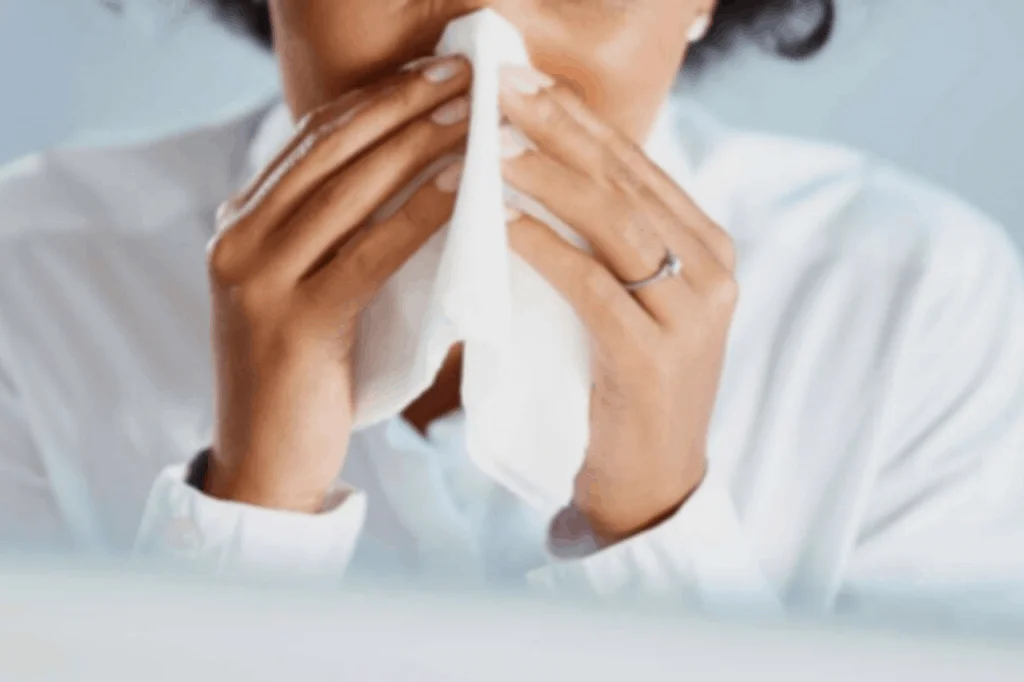If you love the outdoors but are sensitive to pet hair, the Goldendoodle is just the dog for you. Such a pet would provide you with the best of both worlds. Allergy-free for the most part at home. It would render your outdoor trips a pleasure through its high energy levels, enthusiasm, and unparalleled ability to retrieve.
As a whole, Goldendoodles are hypoallergenic. However, dog breeders decided to breed a Poodle with a Golden Retriever at some point in time, and the outcome turned out to be a Goldendoodle. I have a Goldendoodle, Nala, and she does not shed. Having said that, there is the occasional fur ball when she’s been scratching a bit.
Also known as a “Groodle,” this hybrid echoes both its parents in equal parts. From its Golden retriever parent, it inherited a soft mouth which enabled it to retrieve game-birds efficiently. Likewise, the Poodle handed down to the offspring it’s legacy of hardly ever shedding.
What would indeed be a pleasure is a comfort with which you and your Doodle could snuggle within the tent without you having to worry about pet-hair problems.
Hypoallergenic – Do You Know What It Means?
As per the American College of Allergy, Asthma, and Immunology, there are three ways a dog can trigger a reaction in any individual, namely dander, urine, and saliva.
Therefore, contrary to the popular myth, it is not just the pet-hair, which is the culprit as far as discomfort is concerned.
What has also been proven is that some dog breeds are more likely to carry the allergy-causing substance than others—the ones who don’t are labeled as being hypoallergenic.
‘Hypo’ is Greek for less/under, and it is the opposite of ‘hyper,’ which means more.
When used as a prefix to the word allergy, ‘hypo’ allergy implies ‘less’ allergy, and the dog breed in question is then described as hypoallergenic. Hypoallergenic dog breeds – Goldendoodles being one of them – are so represented because they also do not release dander or dead skin cells in addition to shedding less.
Hence they are considered ideal for people who regard pets as causing unending sneezing fit or rashes that itch incessantly.
How Hypoallergenic Are Goldendoodles?
Assuming that you have identified the Doodle as your ideal pet after a lot of detailed research, it is time to take things further a step further. You may or may not be allergic to pets, and Goldendoodles being hypoallergenic could have been one of the reasons that caused you to show bias towards this breed.
If this is the case, then you must dig deeper and learn more about the extent to which a Doodle can be truly hypoallergenic.
Dander is something that all dogs produce, and Goldendoodles are no exception to this rule. The general impression is that dogs carry dander in their fur.
However, since a hairless dog can still have dander, it would be wrong to label any dog as totally hypoallergenic.
A more accurate classification would be to segregate them based on which breed carries the least amount of dander, and this is where Goldendoodles come in.
That being said, when your newly acquired adorable Goldendoodle does trigger an allergic reaction or an asthmatic attack, there is something more to the issue. It is a sign that you need to look into factors such as its parentage, the generation it belongs to, and of course, the nature of its coat.
Goldendoodles’ Generations Outlined
Among doodles, generations are marked as per the breeds of the parents that form the equation. So, like all doodles, Goldendoodles can be first-generation, second-generation, or multi-generational.
| F1 | 50% Golden Retriever, 50% Poodle |
| F1B | 25% Golden Retriever, 75% Poodle |
| F1BB | 12.5% Golden Retriever, 87.5% Poodle |
| F2 | 50% Golden Retriever, 50% Poodle |
| F2B | 37.5% Golden Retriever, 62.5% Poodle |
| F2BB | 18.75% Golden Retriever, 81.25% Poodle |
| F3 | Various generations |
Outlined below are the first-generation, or F1, Goldendoodles that a potential doodle lover would come across in the quest for a pet –
- F1, wherein both the Poodle and the Golden retriever are equally represented in the offspring, and hence shedding might be higher than what is typical for a doodle;
- F1B, wherein 3/4th of the genes are Poodle and 1/4th is that of the Golden retriever, due to which it is more hypoallergenic than the F1 doodles;
- F1BB, wherein the Poodle account for 87.5% of the genetic make-up while the contribution of the Golden retriever is just 12.5%, thus rendering this as the most suitable for allergic and asthmatic patients;
Any doodle generation followed by the initial ‘B’ indicates that the Goldendoodle has been cross-bred with the Poodle. Going by this logic, a double ‘B’ implies the cross-bred hybrid being again bred with a Poodle.
Because a ‘B’ indicates more Poodle characteristics and less of the Golden retriever, these Doodle generations are relatively more hypoallergenic.
Then there is the second-generation, or F2, Goldendoodles, which can be –
- F2, which is an outcome of breeding two F1 Goldendoodles;
- F2B, which is about 60% poodle and 40% Golden retriever;
- F2BB, which is about 80% poodle and about 20% Golden retriever, and hence the most hypoallergenic of the three;
Goldendoodles can also be multi-generational or F3, wherein the F2 generation is bred with a poodle. Courtesy of this combination, F3 Goldendoodles are more hypoallergenic than the F1, although they may be comparable to the F2 Goldendoodles.
Goldendoodles Relevant Facts
Sometime towards the second half of the 20th century, Monica Dickens cross-breed a poodle with a Golden Retriever. The intention was to create a hybrid that had the best of both parent breeds, for example, the retrieving instinct of the Golden retriever and the non-shedding trait of the Poodle.
While the experiment did succeed to a certain extent, what soon became apparent is that the new breed, namely the Goldendoodles, was prone to echo either of the parents in ways that were often unpredictable.
One such aspect was the coat, which is a primary determinant of the hybrid’s hypoallergenic trait.
To this effect, Goldendoodles vary in terms of the types of coats, which could be either of the three –
- Curly, which indicates a dominant poodle gene, and hence sheds minimally;
- Wavy, which is in-between the Poodle’s curls and the Golden retriever’s straight tresses, and sheds moderately;
- Flat, which is the legacy of the golden retriever, and sheds sufficiently to cause anxiety to sensitive pet owner;
Likewise, there is variation in size too, and in this regard, the Goldendoodle is on the smaller side to reflect its poodle parent.

Can I Be Allergic To A Goldendoodle?
How is it that not everyone who owns a Goldendoodle experiences allergic symptoms? On the other hand, it is equally valid despite Goldendoodles being hypoallergenic, and there are pet owners who have complained of having suffered symptoms.
Much of the individual’s reaction depends on the degree of sensitivity and the generation of Goldendoodle chosen. For someone who is extremely sensitive, minimizing physical contact is how the symptoms can be controlled.
Comparatively, mild and low symptoms are easier to manage and do not call for any drastic action.
Since it is better to be safe than sorry, you would do better to consult a doctor and undergo allergy tests before adopting a Goldendoodle. Go ahead and get one only when you get a clean chit from the physician without any red flags pointing out.
Next, you must thoroughly research the breeders and check their reputation and reliability before adding them to the shortlist.
Unfortunately, there are several unethical breeders when it comes to doodles, which is why you must ensure that the one you are dealing with is genuine and can be trusted. This is an essential step towards avoiding and controlling allergies.
Ensuring Your Goldendoodle Stays Hypoallergenic
It is usual for dogs to adopt the lifestyle and hygiene standards of the household members, and Goldendoodles do the same. In such a situation, good hygiene is important, and regular grooming cannot be stressed enough.
Neglect these aspects, and your Goldendoodle will soon carry a load of dander in its matted and tangled coat and spread its dead skin cells all over the living space. Once that happens, it is just a matter of time before the allergy symptoms kick in where none existed before.
To avoid this gruesome scenario, establish firm hygiene rules which are to be followed under all circumstances. In addition to brushing your Goldendoodle daily, it entails cleaning its bed every day and running the vacuum on all surfaces in the house.
Goldendoodles can be bathed once a week or twice a month, depending on convenience. However, since they do not naturally take water, the onus is on you to get the adorable little pup used to take a bath from a young age.
Final Thoughts
The trick to finding a hypoallergenic Goldendoodle as per your situation is to carefully assess the person and the external front before making a decision. What you ought to be prepared for is that some Goldendoodles will be more hypoallergenic than others.
While Goldendoodles as a breed are more hypoallergenic than other breeds, wide variations are due to myriad factors that can have a bearing on this particular trait.
So, as a rule, Goldendoodles are hypoallergenic, but do your research and ascertain your medical history so that the plunge is pleasant for both you and the Goldendoodle.
